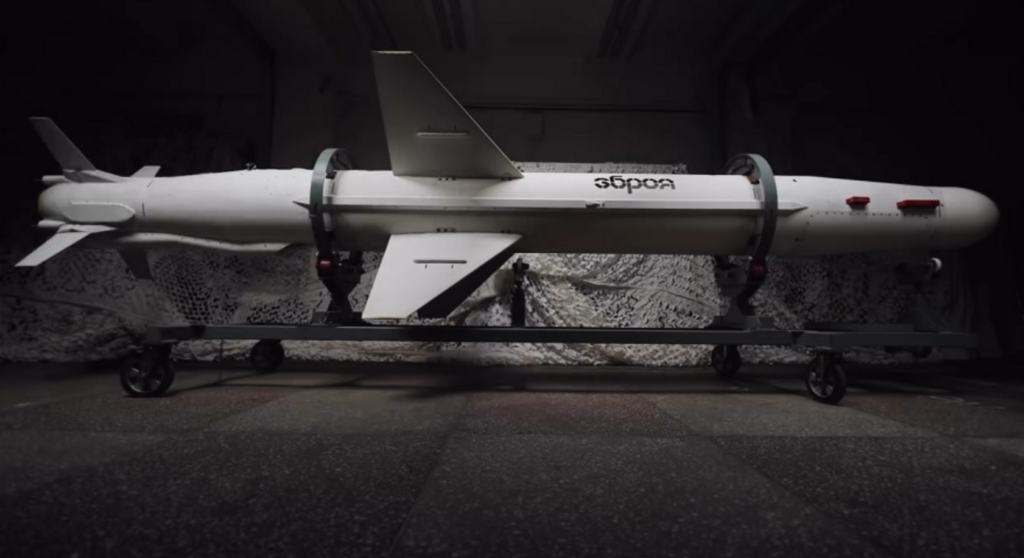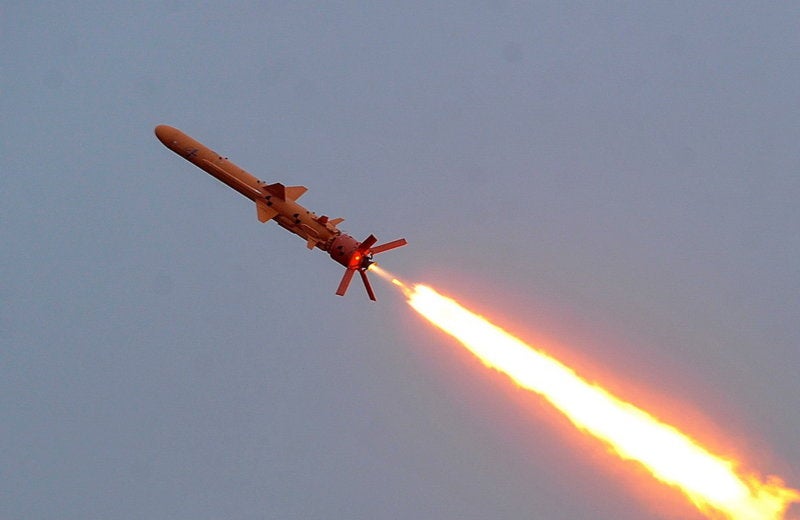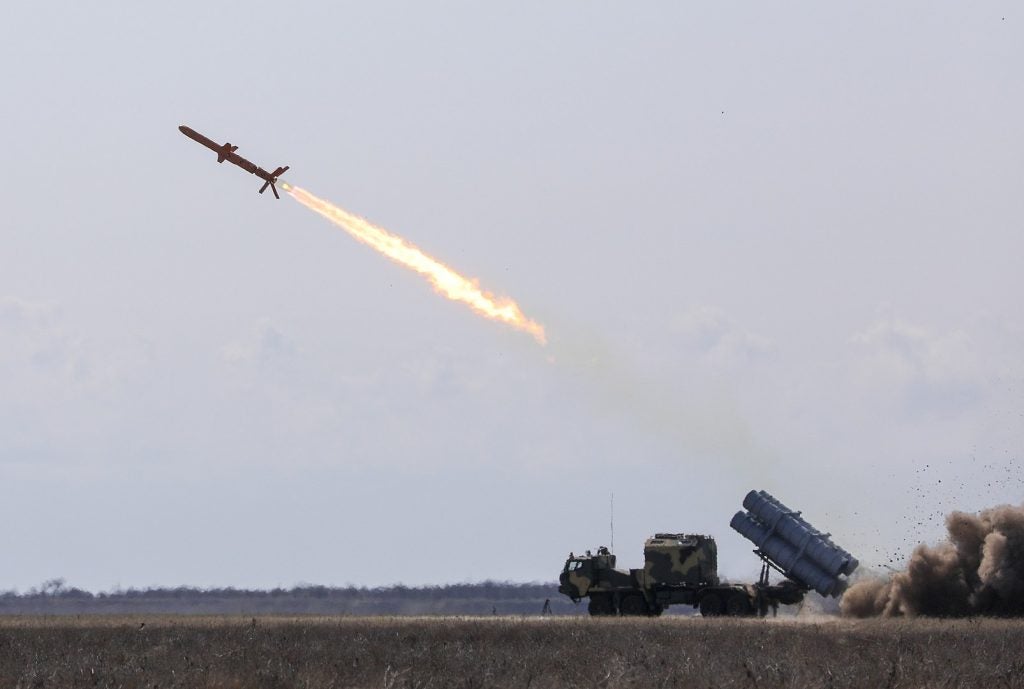Ukraine Unveils 1,000km-Range Neptune Cruise Missile
On August 24, Ukraine’s Independence Day, Kyiv publicly revealed a new long-range version of its domestically built R-360 Neptune cruise missile. State-media released footage showing the upgraded weapon (nicknamed the “Long Neptune”) during the Independence Day celebrations. Ukraine’s president, Volodymyr Zelenskyy, had announced in March that this missile had completed tests and was already being used in combat; he noted its 1,000km (620-mile) range and emphasized that it “exceeds the reach of missiles that Kyiv has received from its Western partners.”
Technically, the Long Neptune retains the original’s subsonic turbofan design and truck-launched launcher, but in a much larger airframe. The new missile is over 6 meters long (approximately 1.5 meters longer than the baseline R-360), with its fuselage expanded from about 38cm to roughly 50cm in diameter. These dimensional increases enable significantly more fuel, allowing for an extended 1,000km strike range. The missile’s guidance reportedly combines inertial navigation with satellite (GPS/GLONASS) mid-course updates and a passive infrared or electro-optical seeker for precision terminal targeting. Warhead weight has not been officially disclosed, but observers estimate roughly 300–350kg of payload, about double the ~150kg warhead of the earlier Neptune.

The Long Neptune is deployed from mobile ground launchers. The missile was entirely developed in Ukraine by the Luch Design Bureau. The Neptune program began after Russia’s 2014 annexation of Crimea, using Ukraine’s own engineers to build on the Soviet-era Kh-35 design. Guided tests in 2018 led to service entry by 2021. The original Neptune had a range of about 200 miles and a 150kg warhead and then Ukraine introduced an upgraded land-attack variant in 2023 with GPS/IR guidance and roughly 350–400km range.

The Long Neptune substantially extends Ukraine’s strike envelope. Its 1,000km reach rivals that of Russia’s Kalibr or even the U.S. Tomahawk cruise missiles, allowing strikes on targets deep inside Russia. President Zelensky has pointed out that this new system has no usage restrictions unlike many Western-supplied long-range missiles. A March 2025 blast at the Tuapse oil refinery (450km inside Russia) has been attributed to this missile, and other strikes on Bryansk energy facilities have been reported. It’s unknown how accurate or what the missile’s survivability is like but the Long Neptune reinforces Ukraine’s expanding long-range missile capabilities by forcing Moscow to defend rear-area sites and reducing Kyiv’s reliance on allied weapons.
The unveiling of the extended range Neptune cruise missile marks a major milestone for Ukraine’s defense industry. Ukraine now fields a deep-strike missile comparable in range to some of the world’s more advanced systems. The development and public debut of this domestically built missile underscore Ukraine’s drive for self-reliant weapons production and its commitment to extending strike capability far beyond its borders.

